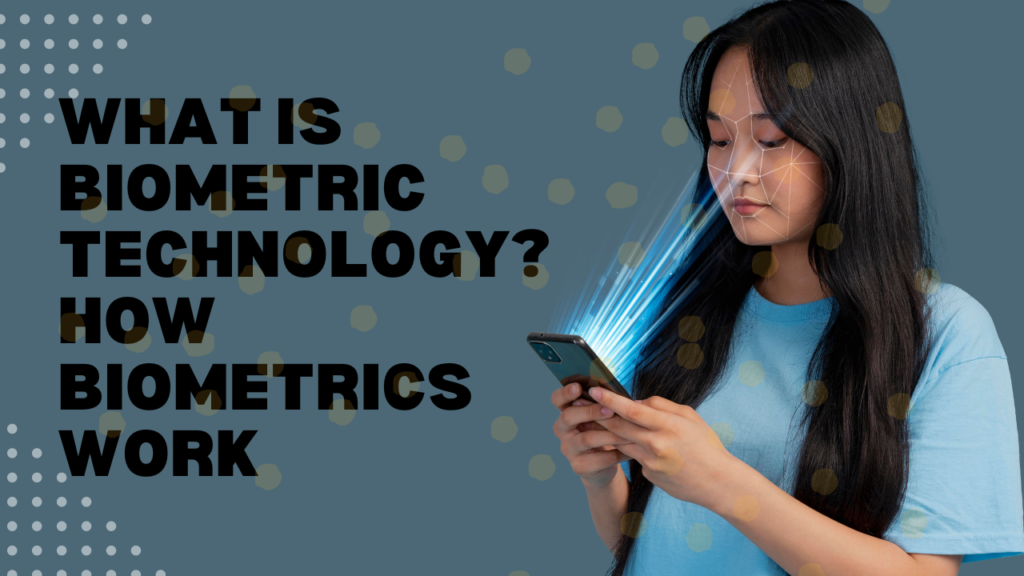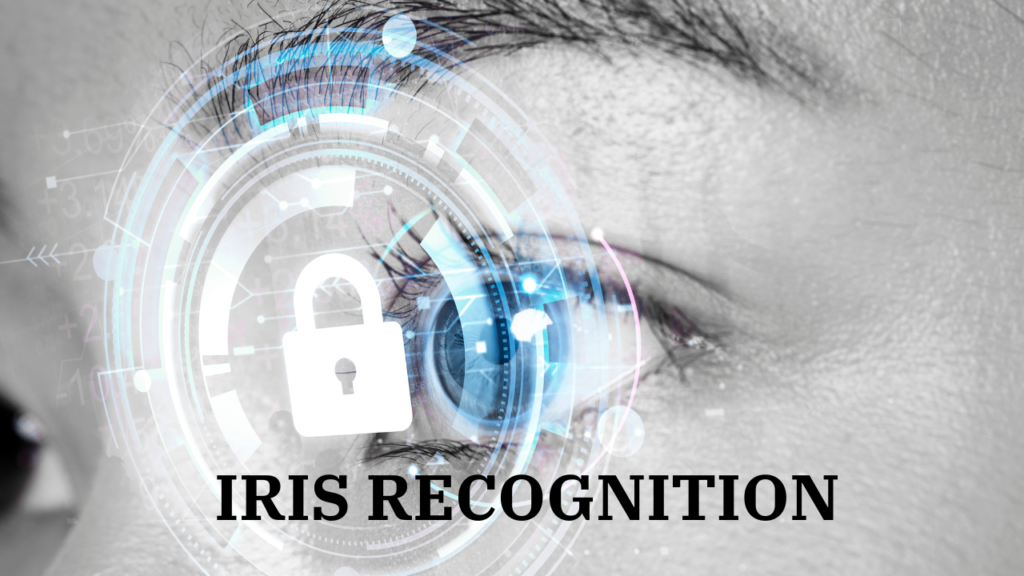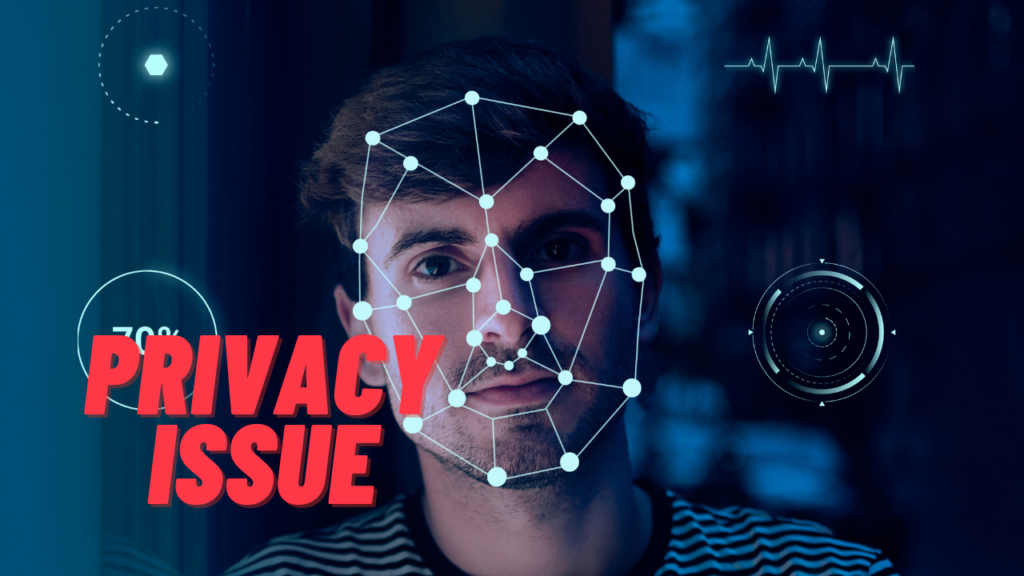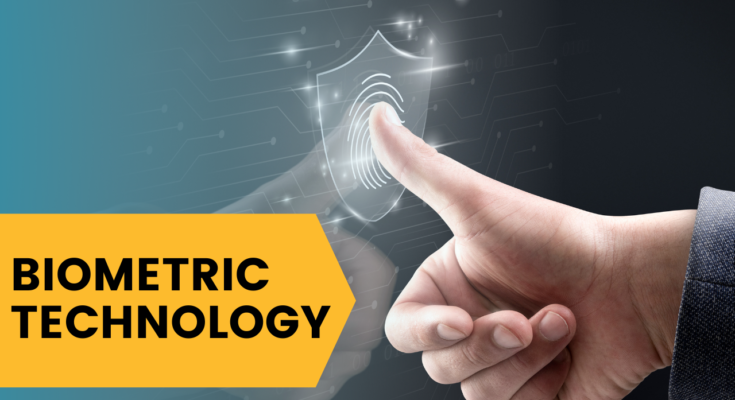What is Biometric Technology? How biometrics work:
The name “biometrics” is derived from the Greek terms “bio” (life) and “metric” (measuring). Biometric Technology is the measuring and statistical analysis of a person’s distinct physical and behavioral traits. The technology is primarily used for identification and access control, as well as to identify persons under observation. Biometric Technology authentication relies on unique physical or behavioral characteristics to reliably identify individuals.

Working of biometrics Technology:
Biometric Technology authentication is increasingly used in business and public security systems, consumer devices, and POS applications. Biometric verification offers ease by eliminating the need for passwords and security tokens. Some biometric approaches, such as measuring a person’s stride, do not require physical touch with the individual being validated.
The components of Biometric technology devices include the following:
- A biometric authentication system consists of a reader or scanning equipment
- Software for converting scanned data into a defined digital format.
- A database for securely storing and comparing data.
Biometric data can be stored in a centralized database, but modern implementations typically gather it locally and cryptographically hash it for authentication or identification without direct access to the data.
Types of Biometric Technology:
Biometric IDs are classified into two types:
- physiological characteristics
- behavioral characteristics.
Physiological identifiers refer to the composition of the user being authenticated and may include the following:
- facial recognition
- fingerprints
- finger geometry (the size and position of fingers)
- iris recognition
- vein recognition
- retina scanning
- voice recognition
- DNA (deoxyribonucleic acid) matching
- digital signatures
Common Biometrics Techniques
1. Fingerprint Identification
Fingerprint-based Biometric Technology seek for certain line patterns on the surface of your fingertips. The ridge endpoints, bifurcations, and islands that comprise the line pattern are then saved as an image. It is the most used biometrics technology since it is a very efficient and simple way to store individual information. It is also simple to use and inexpensive technology.
Fingerprint identification has the problem of being an external characteristic, which means that its image may be reproduced and recreated, even if it is stored in an encoded manner. As an image, it may be compared and utilized to produce identical code. Fingerprints may be faked using readily available technologies. Furthermore, another unusual aspect to consider is that a fingerprint submitted for recognition can be coerced and does not necessarily need to be tied to a body. Fingerprints also fade with age. As a result, some persons may face difficulties in registering their fingerprints.
2. Facial Recognition
Facial recognition is a biometric technology or technique which is used to examines the shape and position of face features to identify a perfect match. Skin is one of the factors considered. Facial recognition is increasingly being utilized as a security feature to recognize faces in complicated photos. The technology has advanced fast over the years and is quite useful for remote recognition. Another benefit of this technology is that it aids in ‘negative identification’, which means that it removes faces from a crowd in order to limit down suspects.
3. Iris Recognition
Iris recognition employs a scanner to read the iris’s unique properties and then turns the data into an encrypted barcode. When accomplished using infrared light, it is regarded as an effective biometric security technology and is employed in a variety of security applications.

One disadvantage of iris recognition is user reluctance. Many individuals find it uncomfortable to have their iris scanned since it needs them to be in a specific posture, which causes pain. It is also crucial to note that, while iris scanning provides great levels of security, it may come at the sacrifice of speed.
4. Vein Pattern Recognition
Vein pattern recognition captures images of the bifurcations and termination points of veins in fingers or palms, digitizes them, and stores them as encrypted codes. The technique is deemed secure since veins lie beneath the skin’s surface rather than on it, making it difficult to copy.
However, it is crucial to note that vein patterns in very cold or ‘dead fingers’ (Raynaud’s Syndrome) are difficult to discern. The technique is also quite pricey and remains unknown to many.
5. Voice Recognition
Voice, like the face and fingerprints, is an intrinsic unique attribute. Voice recognition involves no effort from consumers and hence is quite handy. This technique is widely employed in applications that need voice processing, such as call centers. Voice recognition is also be used in security applications like credit card verification, teleconferencing, forensics and many more. Enhance the security level, voice recognition can be combined with the other biometric technique, like fingerprint recognition, to provide two-factor authentication.
What Is Biometric Authentication?
Biometric authentication verifies identification by using inherited physical or behavioral characteristics. In the early days of computers, it was thought adequate to utilize a single factor to authenticate people accessing local machine resources. Early Internet authentication relied on a simple username/password combination.
Advanced security risks, mobile devices, and scanning equipment have led to widespread use of multi-factor authentication (MFA), including biometric authentication, in both consumer and commercial settings.
How Does Fingerprint Authentication Work?
Fingerprint authentication, also known as fingerprint biometric technology, uses the unique properties of the human fingerprint. The human fingerprint consist of ridges and lines that made a pattern which is entirely unique to the individual when viewed as a whole. Fingerprint uniqueness has long been a cornerstone of law enforcement and media coverage, and even in 2022, forensic science has yet to find two identical fingerprints, even amongst identical twins.

As a result, fingerprints are an excellent choice for biometric identification. Furthermore, because contemporary fingerprint scanning technology has grown both sophisticated and readily available, it is quite simple to use, locate, and incorporate into a security system.
The fingerprint authentication procedure consists of four fundamental steps:
- Image Acquisition: This stage entails taking a picture of the fingerprint with a sensor or scanner. The sensor identifies the fingerprint’s unique patterns and properties.
- Pre-processing: Once obtained, the picture is pre-processed to improve its quality and extract key characteristics. To achieve reliable analysis, procedures like as filtering, noise reduction, and normalizing may be used.
- Feature Extraction: This stage extracts characteristic fingerprint features such as ridge endpoints, bifurcations, and ridge orientation from the pre-processed picture. These qualities are utilized to construct a template, which is a unique representation of the fingerprint.
- Matching: The extracted characteristics are compared to the database’s stored templates to see if they match. Matching is done using a variety of methods, including minutiae-based and correlation-based. If the fingerprint’s characteristics adequately match a recorded template, it is authenticated, allowing access or proving identification.
Onboarding
To benefit from fingerprint authentication, users must first onboard. At this point, the user will normally interact with the device to give fingerprint data via a fingerprint scanner. The scanner will frequently require the user to scan their finger several times in order to obtain an accurate image of the patterns embedded therein.
On the backend, this fingerprint data will be encoded into a biometric schema or data representation that may be used as a reference point for future authentication sessions. This template is saved to a database for future reference.
Scanning
Users who want to access a system via a fingerprint authentication-enabled device place their finger upon the fingerprint scanner.
Currently, there are four types of scanners:
- Optical: As the name implies, optical scanners employ visible light to capture a picture of a fingerprint put on a glass plate. It then makes an inverted representation of the fingerprint. These scanners are fairly precise and affordable, however the surface must be kept clean or performance may suffer.
- Capacitive scanners: employ modest electrical charges to “charge” the fingerprint and trace the print properly by measuring the capacitive potential of human skin against air spaces between ridges. These are somewhat more sensitive than their optical equivalents and far more resistant to fraud because to hackers’ inability to employ prostheses.
- Thermal scanners: employ heat in the same manner as capacitive scanners use electricity. With heat differentials between regions of a fingerprint, the scanner can accurately generate a fingerprint schema. However, it needs the gadget to create heat, which may be impractical for most devices.
- Ultrasonic scanners: rather of using light, employ sound pulses to “sonar” read the surface of the fingerprint. This authentication approach is slower than light-based alternatives, but it is extremely accurate.
What are security and privacy issues of Biometric Technology?
Biometric IDs are based on the uniqueness of the element being investigated. Fingerprints, for example, are thought to be extremely distinctive to each individual. Fingerprint identification, particularly as implemented in Apple’s Touch ID for prior iPhones, was the first biometric authentication mechanism to be extensively employed in the mass market.
Other Biometric Technology criteria include retinal, iris, vein, and voice scanning. However, they have not been extensively embraced thus far, possibly due to a lack of faith in the uniqueness of the IDs or because the factors are simpler to spoof and exploit for nefarious purposes, such as identity theft. The biometric factor’s stability can also influence its adoption. Fingerprints remain the same throughout one’s life, but face appearance might alter dramatically due to age, disease, or other circumstances.

The most serious privacy risk with biometrics is that physical traits, such as fingerprints and retinal blood vessel patterns, are frequently fixed and cannot be modified. This is distinct from nonbiometric factors such as passwords (something one knows) and tokens (something one owns), which may be replaced if infiltrated or otherwise compromised. The 2014 data leak from US Office of Personnel Management revealed more than 20 million people’s fingerprint, indicating the urgency of the situation.
As high quality cameras, microphones, and fingerprint scanners become too common in mobile devices, Biometric technology will become an increasingly popular way of user authentication. Fast ID Online has set new standards for Biometric Technology that support two-factor authentication with biometric factors.
While the quality of Biometric Technology readers in increasing, they can still produce false negative when an authorized user is not verified or identified, and false positive when an unauthorized individual is found and authenticated.
Conclusion:
Biometric technology is the measuring and analysis of a person’s unique physical and behavioral traits. Biometric technology’s principal uses include identity, access control, and surveillance. Biometric technology identification effectively identifies persons based on unique qualities such as fingerprints, iris patterns, facial features, vein patterns, and voiceprint. As technology advances, biometric authentication becomes increasingly prevalent, particularly in consumer electronics and security systems. However, concerns like as false positives and false negatives continue, underscoring the importance of continuous developments in biometric technology.

